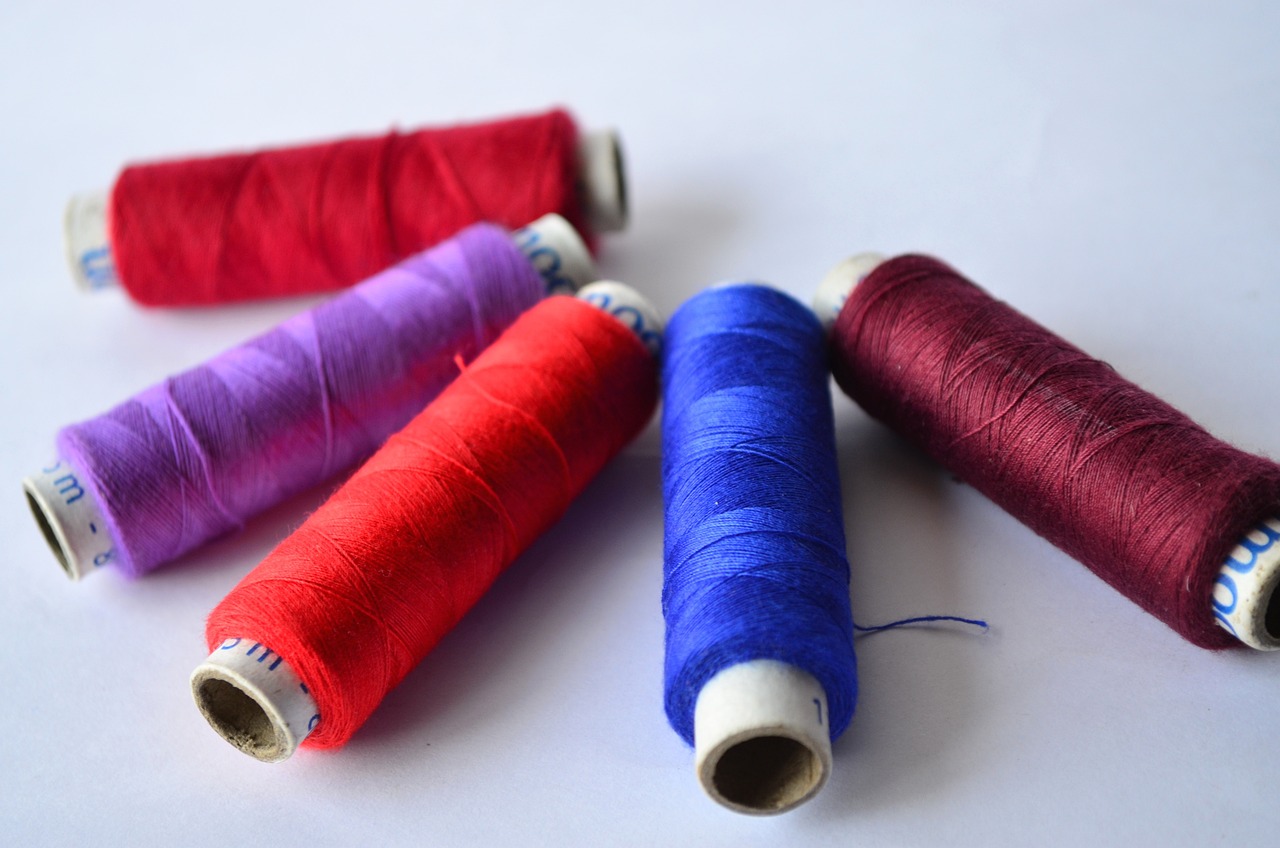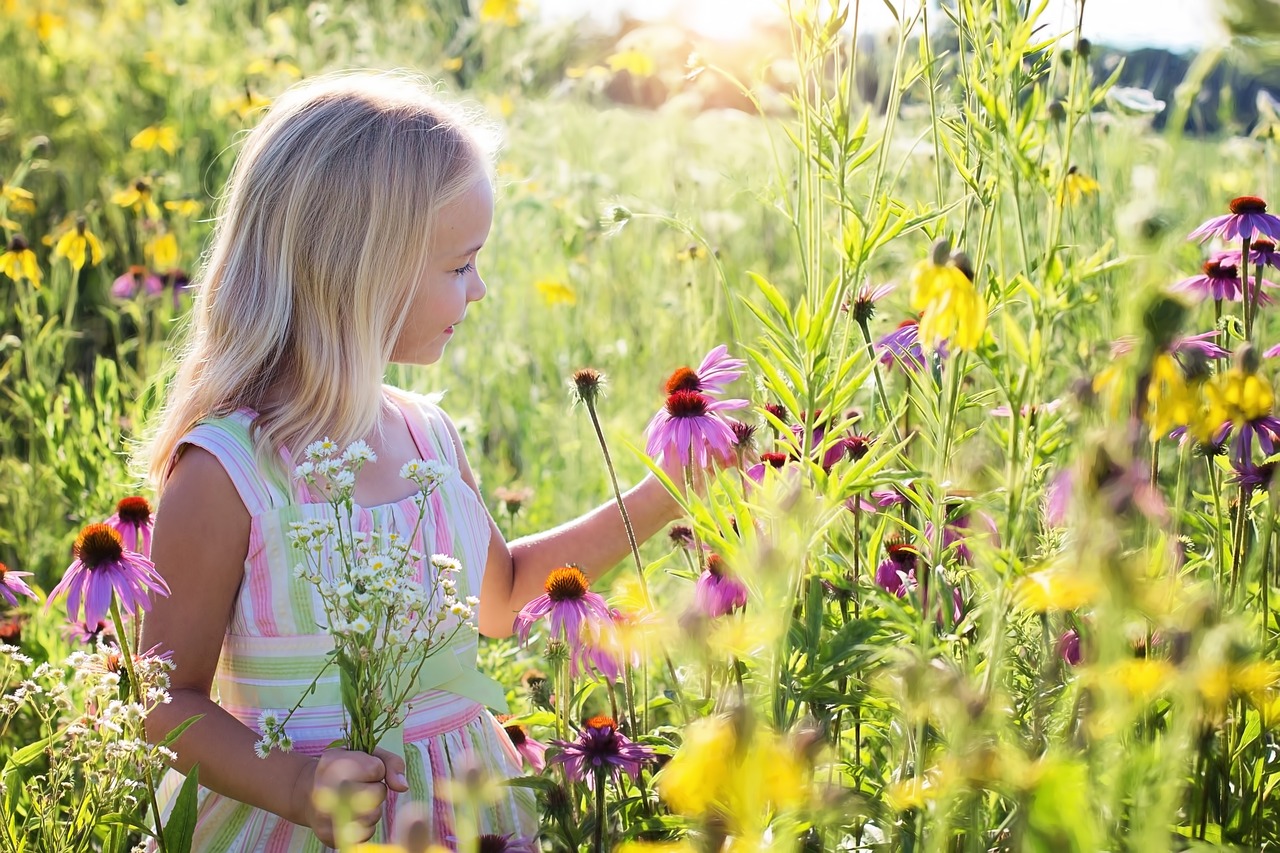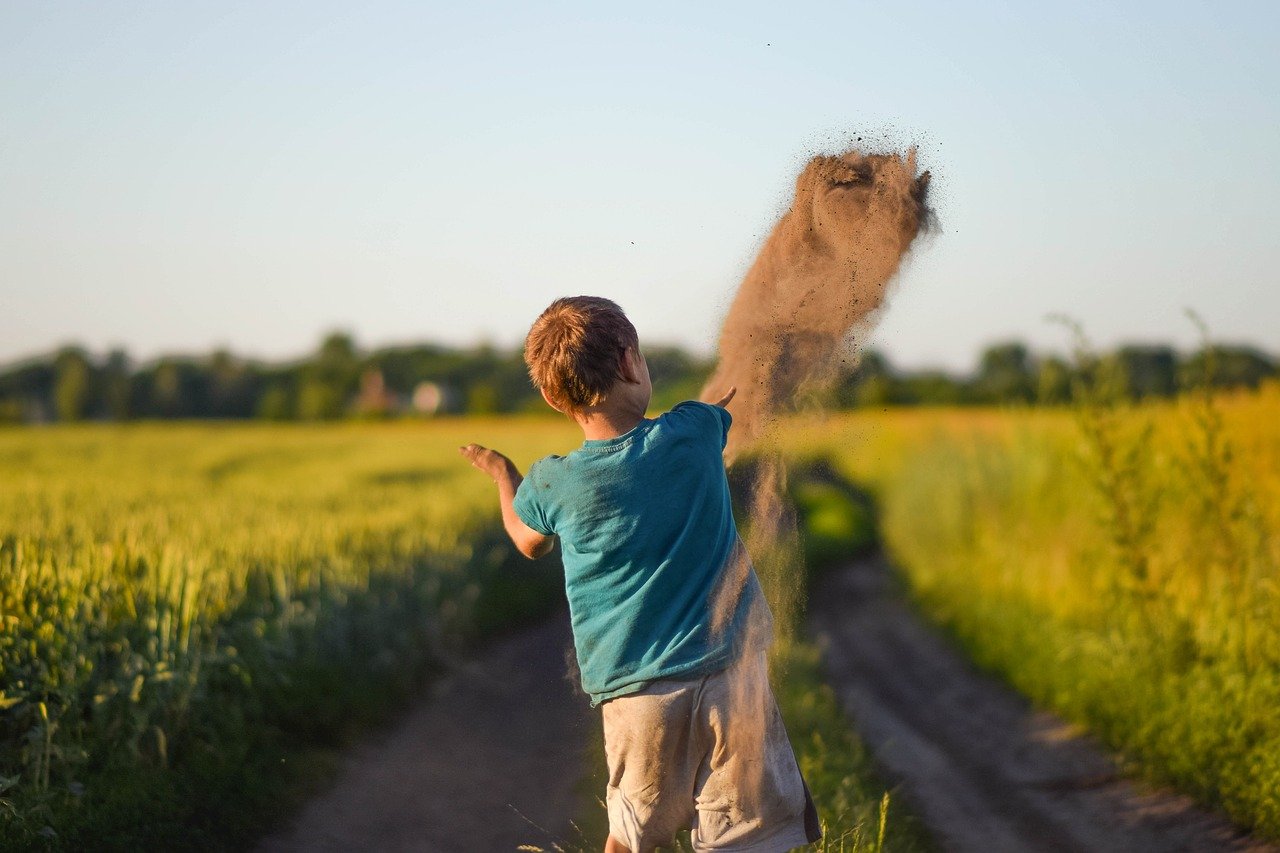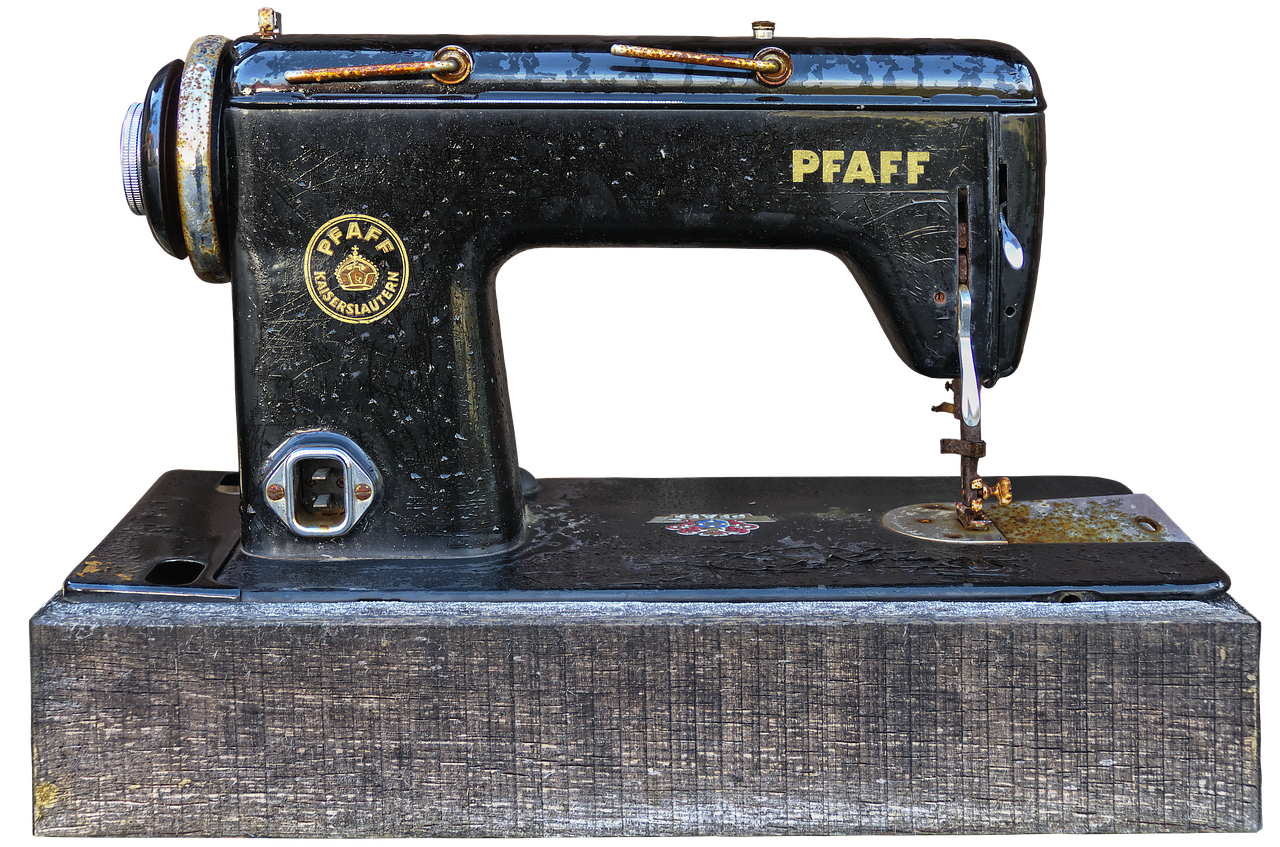How to Start a Fun Patchwork Project with Kids
Are you ready to dive into a colorful world of creativity with your kids? Starting a patchwork project can be a fantastic way to bond and unleash your children's artistic flair. Not only does it provide a platform for self-expression, but it also encourages teamwork and develops essential skills like problem-solving and fine motor coordination. Imagine the joy on their faces as they see their ideas come to life, stitch by stitch! In this article, we’ll walk you through the steps to kick off a fun patchwork project that will not only keep your little ones engaged but will also create lasting memories.
Patchwork is like a giant puzzle made of fabric, where each piece tells a story. By involving your kids in this creative process, you’re not just teaching them how to sew; you're also helping them learn about colors, patterns, and the satisfaction of completing a project. So grab your fabric, thread, and sewing tools, and let’s get started on this exciting adventure!
First things first, let’s talk about choosing the right materials. The fabric you select should not only be vibrant and appealing but also durable and safe for children. Think about cotton or canvas, which are easy to work with and come in a variety of fun patterns. Ensure that the sewing tools are child-friendly; for instance, using safety scissors can prevent accidents while still allowing them to participate actively in the cutting process. Remember, the goal is to create an environment where kids feel safe and excited to explore their creativity!
As you embark on this patchwork journey together, planning the design is crucial. Involve your children in brainstorming sessions where they can express their ideas freely. Discuss themes that resonate with them—like their favorite animals, colors, or even characters from their favorite stories. Encourage them to think outside the box! Sketching ideas on paper can be incredibly beneficial. It helps them visualize their concepts and serves as a great way to brainstorm collectively. You might be surprised by the imaginative designs they come up with!
Using templates can simplify the design process significantly. Consider providing pre-made templates that match the ideas your kids have sketched. This allows them to focus on their creativity without feeling overwhelmed by complex shapes and patterns. Templates can serve as a guide, helping them understand how to piece everything together effectively. Collaborative planning is also a fantastic way to enhance teamwork. Encourage your kids to share their thoughts and compromise on ideas, fostering a sense of collaboration and shared ownership of the project.
Choosing colors is another exciting part of the patchwork process. Help your kids understand the basics of color theory and encourage them to choose combinations that reflect their personalities. A vibrant mix of colors can bring their patchwork to life! You might even want to create a color palette together, experimenting with different shades until they find the perfect match.
Before diving into the sewing part, it’s essential to teach your kids some basic sewing techniques. Start with the fundamentals like threading a needle and practicing simple stitches. This knowledge will empower them to contribute effectively to the project and build their confidence. Safety is paramount, so make sure to discuss safety precautions when using sewing tools. Emphasizing safety helps kids feel more comfortable and confident while working on their patchwork project.
Once your kids have practiced their stitches on some scrap fabric, it’s time to assemble the patchwork! Guide them through the process of cutting, arranging, and sewing their fabric pieces together. Teach them how to arrange their pieces before sewing, encouraging them to think critically about layout and visual balance in their design. Introduce them to various sewing techniques, like straight stitches and zigzag stitches, to enhance their ability to create a polished final product.
After assembling the patchwork, it’s time for the finishing touches! This includes trimming edges, adding borders, and incorporating embellishments to enhance the overall look. Borders can frame the patchwork beautifully, so teach your kids how to measure and sew them on. It’s the little details that can make a big difference! Encourage them to personalize their patchwork with embellishments like buttons, ribbons, or fabric paint. This step allows kids to add their unique flair and make their project truly one-of-a-kind.
In conclusion, starting a patchwork project with your kids can be a delightful experience filled with learning, creativity, and fun. By choosing the right materials, planning thoughtfully, teaching essential skills, and encouraging personal expression, you’ll create an enriching environment that celebrates their creativity. So gather your supplies, unleash your imaginations, and enjoy the beautiful journey of patchwork together!
- What age is appropriate for kids to start patchwork projects? Generally, children aged 6 and up can begin simple patchwork projects with supervision.
- What materials do I need for a basic patchwork project? You'll need fabric, scissors, sewing thread, needles, and possibly some embellishments like buttons or ribbons.
- Can I use old clothes for patchwork? Absolutely! Upcycling old clothes is a great way to teach kids about sustainability while being creative.
- How can I ensure safety while sewing with kids? Always supervise them while using sharp tools, and consider using safety scissors and child-friendly sewing kits.

Choosing the Right Materials
This article will guide you through engaging patchwork projects suitable for children, encouraging creativity and teamwork while developing essential skills and enjoying quality time together.
When embarking on a patchwork project with kids, the first step is to choose the right materials. This is not just a matter of picking pretty fabrics; it’s about ensuring that everything is safe, durable, and easy for little hands to manage. Kids can be a bit rough with their materials, so opting for fabrics that can withstand some wear and tear is key. Look for cotton fabrics, as they are not only durable but also easy to sew and come in a wide variety of colors and patterns that can inspire creativity.
In addition to fabric, you’ll need to consider the tools. Here’s a quick rundown of essential tools that will make your patchwork experience smooth and fun:
- Child-Safe Scissors: Make sure the scissors are designed for kids to prevent any accidents.
- Sewing Needles: Use needles that are easy to thread and suitable for the fabric type.
- Measuring Tape: A flexible measuring tape will help in cutting the fabric accurately.
- Fabric Glue: For those who are not yet comfortable with sewing, fabric glue can be a lifesaver!
Safety is paramount, especially with kids involved in the project. Ensure that any tools you choose are age-appropriate. For instance, if your children are very young, consider using fabric glue instead of needles, or opt for sewing kits designed specifically for beginners. This way, they can still participate without the risk of injury. When selecting materials, also look for non-toxic options, particularly if you’re using paint or embellishments.
Don’t forget about the variety of textures! Incorporating different fabric types like felt, fleece, or even denim can add an exciting dimension to the project. Each texture can evoke different feelings and ideas, making the patchwork even more engaging for kids. Plus, it’s a great opportunity to teach them about different fabric properties and how they can affect the overall look and feel of their creation.
Finally, consider the theme of your patchwork project. Are you making a quilt, a wall hanging, or perhaps a cozy pillow? The theme will guide your material choices. For instance, if you’re creating a nature-themed patchwork, you might want to include fabrics with floral or animal prints. On the other hand, a space-themed patchwork could feature stars, planets, and dark blue or black fabrics. Involving kids in this decision-making process not only enhances their excitement but also teaches them about the importance of cohesive design.
In summary, choosing the right materials sets the foundation for a successful patchwork project. By focusing on safety, durability, and creativity, you’ll ensure that your kids have a fantastic time while learning valuable skills. Remember, the goal is to create something beautiful together while fostering a love for crafting!
Q: What age is appropriate to start patchwork projects with kids?
A: Generally, kids as young as 5 can start with simple projects, especially if using fabric glue instead of sewing. As they grow older, they can learn more complex techniques.
Q: What should I do if my child gets frustrated with sewing?
A: It’s important to keep the atmosphere light and fun. Encourage them to take breaks and remind them that crafting is about creativity, not perfection!
Q: Can we use recycled materials for patchwork?
A: Absolutely! Using recycled materials is a fantastic way to teach kids about sustainability while also sparking their creativity.

Planning the Design
Planning the design of your patchwork project is like laying the foundation for a beautiful building; it requires thought, creativity, and a sense of teamwork. Involving children in this stage is crucial as it not only sparks their imagination but also helps them feel a sense of ownership over the project. Start by discussing various themes that resonate with the kids. Do they love animals, nature, or perhaps their favorite cartoon characters? This brainstorming session can lead to some exciting ideas and will allow them to express their unique preferences.
Once a theme is chosen, dive into the world of colors and patterns. Encourage the kids to think about the colors they love and how those colors can be combined to create something truly special. You might say, "Imagine a patchwork blanket that reflects your favorite colors! What would that look like?" By asking open-ended questions, you can help them visualize their ideas and feel more connected to the project.
Encouraging kids to sketch their design ideas on paper is an excellent way to help them articulate their vision. This activity not only serves as a great brainstorming session but also helps them visualize the final product. Provide them with some basic drawing materials—pencils, markers, or crayons—and let their creativity flow. You might be surprised by what they come up with! This can also be a fun opportunity to teach them about the importance of planning before executing a project, much like an architect who sketches the plans before building a house.
To simplify the design process, consider providing pre-made templates for patterns. Templates can be a lifesaver, especially for younger children who might feel overwhelmed by complex shapes. By using templates, kids can focus on creativity rather than getting bogged down in the details of cutting shapes. You can explain, "Think of templates as the maps that guide us through our creative journey!" This way, they can still express their creativity while having a solid foundation to work from.
Encouraging collaboration during the planning phase can significantly enhance teamwork among the kids. Have them share their thoughts and ideas, and encourage them to listen to one another. This process will not only foster a sense of community but also teach them valuable lessons in compromise and collaboration. You might set up a roundtable discussion where each child can present their ideas. This could be a delightful experience, akin to a mini design conference where everyone's voice matters!
Choosing colors is an exhilarating part of the patchwork design process. Help the kids understand some basic principles of color theory, such as complementary and contrasting colors. You could create a simple color wheel together and discuss how certain colors evoke different emotions. For instance, blue can be calming, while red can be energizing. Encourage them to select color combinations that reflect their personalities and preferences, making the project a true representation of who they are. This way, every stitch will be infused with their unique spirit!

Sketching Ideas
This article will guide you through engaging patchwork projects suitable for children, encouraging creativity and teamwork while developing essential skills and enjoying quality time together.
Selecting appropriate fabrics and tools is crucial for a successful patchwork project. Consider durability, safety, and ease of use to ensure a fun experience for kids.
Involving children in the design process fosters creativity. Discuss themes, colors, and patterns, allowing them to express their unique ideas and preferences for the patchwork project.
Encouraging kids to sketch their design ideas on paper is an essential step in the patchwork project process. Not only does this activity help them visualize the final product, but it also serves as a fantastic brainstorming session. Picture this: a blank canvas where their imagination can run wild! Kids can use crayons, markers, or colored pencils to bring their ideas to life. This vibrant expression of creativity allows them to explore various shapes, patterns, and themes that resonate with their personalities.
To start, gather some basic supplies like sketch paper and drawing tools. You might want to set up a cozy little corner with some snacks and music to make it even more inviting. Ask them questions like, “What do you want your patchwork to represent?” or “Which colors make you feel happy?” These conversations can spark ideas and inspire them to think outside the box. It’s all about creating an environment where their creativity can flourish!
As they sketch, remind them that there are no wrong answers. Encourage them to let their imagination soar, even if it means drawing something unusual or silly. This process is about exploration, not perfection. You might even consider having a little gallery walk at the end where each child can present their sketches and explain their ideas. Not only does this build confidence, but it also fosters a sense of community and collaboration among the kids.
Additionally, if some kids are feeling a bit shy about their drawing skills, you can suggest using templates or stencils. These can simplify the design process and allow kids to focus on creativity without feeling overwhelmed by complex shapes. You can provide them with a variety of templates that they can trace or modify to make their own. Remember, the goal is to have fun and express themselves!
Templates can simplify the design process. Provide pre-made templates for patterns, allowing kids to focus on creativity without feeling overwhelmed by complex shapes.
Working together on the design can enhance teamwork. Encourage kids to share their thoughts and compromise on ideas, fostering a sense of collaboration and shared ownership.
Selecting colors is an exciting part of patchwork. Help kids understand color theory and encourage them to choose combinations that reflect their personalities and preferences.
Before starting, teach kids essential sewing skills. Simple techniques like threading a needle and basic stitches will empower them to contribute effectively to the project.
Discuss safety measures when using sewing tools. Emphasizing safety helps kids feel more comfortable and confident while working on their patchwork project.
Allow kids to practice basic stitches on scrap fabric. This hands-on experience builds their confidence and prepares them for the actual patchwork project.
Once the design is ready, it's time to assemble the patchwork. Guide kids through the process of cutting, arranging, and sewing their fabric pieces together.
Teach children how to arrange their fabric pieces before sewing. This step encourages them to think critically about layout and visual balance in their patchwork design.
Introduce kids to various sewing techniques such as straight stitches and zigzag stitches. These skills will enhance their ability to create a polished final product.
After assembling the patchwork, it's important to add finishing touches. This includes trimming edges, adding borders, and incorporating embellishments to enhance the overall look.
Borders can frame the patchwork beautifully. Teach kids how to measure and sew borders, giving their project a polished and professional appearance.
Encourage creativity by adding embellishments like buttons, ribbons, or fabric paint. This step allows kids to personalize their patchwork and make it truly unique.
- What age is appropriate for kids to start patchwork projects? Generally, children aged 6 and up can start with simple projects, but it depends on their individual skills and interests.
- Do I need to have sewing experience to help my kids? While some basic sewing knowledge is helpful, many resources are available for beginners. You can learn together!
- What materials are best for beginners? Start with cotton fabrics, safety scissors, and child-friendly sewing kits to ensure a fun and safe experience.

Using Templates
When it comes to starting a patchwork project with kids, using templates can be a game-changer. Think of templates as the guiding stars in a vast sky of creativity. They provide structure and direction, allowing children to focus on their artistic expression without feeling overwhelmed by the intricacies of design. By offering pre-made patterns, you can simplify the process and encourage kids to dive into the fun aspects of patchwork.
Templates can come in various shapes and sizes, catering to different skill levels and project types. For younger children, consider simple shapes like squares, triangles, or circles. These basic forms can be easily manipulated and combined to create stunning designs. As kids grow more confident, you can introduce more complex templates featuring intricate patterns or themed designs, such as animals, flowers, or geometric shapes.
Moreover, using templates can spark a collaborative spirit among kids. They can choose their favorite designs and even mix and match different templates to create something entirely new. This not only fosters creativity but also encourages teamwork as they share ideas and help each other with the cutting and sewing processes. You might want to set up a small “template station” where kids can browse through various options, pick their favorites, and discuss how they envision their final project.
To get started with templates, consider the following tips:
- Print and Cut: Find or create templates online, print them out, and cut them out for easy use.
- Trace and Transfer: For reusable templates, use sturdy materials like cardboard or plastic to trace shapes onto fabric.
- Size Matters: Ensure the templates are appropriately sized for the project and the children's skill level.
Incorporating templates into your patchwork project not only makes the process smoother but also allows children to unleash their creativity in a manageable way. With a template in hand, they can focus on the fun parts—choosing colors, arranging pieces, and sewing them together—while building their confidence and skills in the art of patchwork.
Q: What age is appropriate for kids to start patchwork projects?
A: Generally, children aged 6 and up can start with simple patchwork projects, especially with adult supervision. However, younger kids can also participate in basic activities with guidance.
Q: Do I need special tools for patchwork?
A: While basic sewing supplies like needles, thread, and scissors are essential, having fabric templates and a cutting mat can make the process easier and more enjoyable for kids.
Q: How can I make sewing safer for kids?
A: Always supervise children when using sharp tools and teach them about safety practices. Consider using child-safe scissors and needles designed for beginners.
Q: Can patchwork projects be educational?
A: Absolutely! Patchwork projects can enhance fine motor skills, encourage creativity, and even introduce basic math concepts through measuring and cutting fabric.

Collaborative Planning
Collaborative planning is a fantastic way to make your patchwork project not just a task, but a memorable adventure for everyone involved. By encouraging kids to share their ideas and collaborate, you’re not only fostering creativity but also teaching them the invaluable skill of teamwork. Imagine a bustling workshop where each child contributes their unique vision, and suddenly, the patchwork project transforms into a vibrant tapestry of collective imagination!
Start by gathering your little artists around a table and laying out all the materials. As they see the colorful fabrics and tools, their excitement will be palpable. Ask open-ended questions like, “What themes do you think would be fun?” or “Which colors remind you of summer?” This kind of dialogue not only sparks their creativity but also allows them to express their thoughts freely. You might be surprised to hear their ideas; they could suggest a patchwork representing their favorite cartoon characters, animals, or even a family vacation!
As the discussion unfolds, encourage them to sketch out their ideas. This step is crucial because it helps them visualize their thoughts. You can provide them with some basic templates to guide their sketches, but allow them the freedom to deviate and innovate. When they see their ideas taking shape, it boosts their confidence and excitement about the project.
To enhance the collaborative spirit, consider setting up a brainstorming session. Here’s how it can work:
- Each child takes turns presenting their design ideas.
- They can discuss why they chose certain colors or patterns.
- Encourage them to ask questions and provide constructive feedback to each other.
This interactive session not only makes planning more engaging but also teaches them to respect different opinions and find common ground. As they negotiate and compromise on aspects of the design, they’ll learn the art of collaboration, which is a vital skill in every aspect of life.
Once they’ve settled on a final design, make sure to document it. Take photos of their sketches or write down the key elements they agreed upon. This way, they can refer back to it as they work on the project, ensuring that everyone’s vision is honored. Plus, it creates a sense of ownership; they’ll feel proud knowing that they contributed to something special together.
In the end, collaborative planning not only enhances the patchwork project but also strengthens bonds among the kids. They’ll cherish the memories of working together, and who knows? This could be the start of a lifelong love for crafting and teamwork!

Choosing Colors
Choosing colors for your patchwork project is not just a fun activity; it's a crucial step that can significantly influence the overall look and feel of your creation. Imagine walking into a room filled with vibrant hues that evoke happiness or calmness; that's the power of color! When working with kids, it's essential to make this process engaging and educational. Start by introducing them to the basics of color theory. Explain how colors can be categorized into primary, secondary, and tertiary colors, and how they interact with one another. This foundational knowledge can spark their creativity and help them make informed decisions about their color choices.
To make the selection process even more exciting, you can organize a mini color exploration session. Gather a variety of fabric swatches in different colors and textures, and let the kids mix and match. Encourage them to think about emotions associated with colors. For instance, blue can represent calmness, while red can symbolize energy and excitement. Ask them questions like, "What colors make you feel happy?" or "Which color reminds you of your favorite season?" This dialogue not only fosters their creativity but also helps them connect their personal feelings with their artistic choices.
Once the kids have chosen their colors, consider creating a color palette that reflects their vision. A simple way to do this is by arranging the selected fabrics together and observing how they complement or contrast with each other. This visual representation can be a great learning experience, teaching them about harmony and contrast in design. You can even create a small table to illustrate the different color combinations and their effects:
| Color Combination | Effect |
|---|---|
| Blue & Yellow | Bright and cheerful |
| Red & Green | Festive and lively |
| Purple & Gold | Royal and elegant |
| Black & White | Classic and sophisticated |
Involving the kids in this process allows them to take ownership of their project, making it even more special. By the end of this color selection journey, they will not only have a better understanding of colors but also a deeper appreciation for how these choices can transform their patchwork into a unique expression of their personality. So, let the colors flow, and watch their creativity shine!
- What if my child is unsure about color choices? Encourage them to explore and experiment with different combinations. Sometimes, the best ideas come from unexpected pairings!
- How can I make color theory fun for kids? Use interactive activities, like color mixing with paints or fabric swatches, to make learning engaging and hands-on.
- Are there any colors that should be avoided? While there are no strict rules, it's best to avoid colors that clash too harshly, as they may detract from the overall design.

Learning Basic Sewing Techniques
Before diving into the colorful world of patchwork, it’s essential for kids to grasp some basic sewing techniques. Think of it as laying the foundation for a sturdy house; without it, the whole structure might crumble. Teaching children how to sew not only empowers them but also instills a sense of accomplishment. Start with the basics like threading a needle and mastering simple stitches. These skills will be their toolkit as they embark on their creative sewing journey.
Begin by showing them how to thread a needle properly. This might seem trivial, but it’s a crucial step that can often lead to frustration if not done correctly. You can use a simple analogy here: threading a needle is like finding the right key for a lock; it opens the door to creativity! Once they’ve mastered this, introduce them to basic stitches. The two most important ones to start with are the running stitch and the backstitch.
| Stitch Type | Description | Use Cases |
|---|---|---|
| Running Stitch | A simple stitch that creates a straight line of small stitches. | Great for seams and hems. |
| Backstitch | A stronger stitch that goes back on itself, creating a solid line. | Ideal for outlining shapes or when more durability is needed. |
Practice makes perfect! Encourage the kids to practice these stitches on scrap fabric. This hands-on experience not only builds their confidence but also prepares them for the actual patchwork project. Think of it as a warm-up before a big game; it sets the stage for success. You might even set up a little “stitching station” where they can practice freely. Include some colorful threads and fun fabric scraps to make it more inviting!
Lastly, don’t forget to discuss safety precautions when using sewing tools. It’s essential to emphasize that while sewing can be a lot of fun, it also requires respect for the tools involved. Teach them to handle scissors carefully and to always keep their fingers away from the needle when sewing. This way, they’ll feel more comfortable and confident as they work on their patchwork project.
- What age is appropriate for kids to start sewing? Generally, children as young as 5 can start learning basic sewing skills with supervision.
- What materials do I need to get started? You’ll need fabric, thread, scissors, needles, and a sewing machine if available. Don’t forget to add some fun embellishments!
- How can I make sewing more enjoyable for kids? Incorporate games, colorful materials, and allow them to express their creativity freely!

Safety Precautions
This article will guide you through engaging patchwork projects suitable for children, encouraging creativity and teamwork while developing essential skills and enjoying quality time together.
Selecting appropriate fabrics and tools is crucial for a successful patchwork project. Consider durability, safety, and ease of use to ensure a fun experience for kids.
Involving children in the design process fosters creativity. Discuss themes, colors, and patterns, allowing them to express their unique ideas and preferences for the patchwork project.
Encourage kids to sketch their design ideas on paper. This activity helps them visualize the final product and serves as a great brainstorming session for the project.
Templates can simplify the design process. Provide pre-made templates for patterns, allowing kids to focus on creativity without feeling overwhelmed by complex shapes.
Working together on the design can enhance teamwork. Encourage kids to share their thoughts and compromise on ideas, fostering a sense of collaboration and shared ownership.
Selecting colors is an exciting part of patchwork. Help kids understand color theory and encourage them to choose combinations that reflect their personalities and preferences.
Before starting, teach kids essential sewing skills. Simple techniques like threading a needle and basic stitches will empower them to contribute effectively to the project.
When embarking on a patchwork adventure with kids, safety should be your top priority. Before you dive into the fun, it's essential to set some ground rules to ensure a safe and enjoyable experience. First and foremost, always supervise children while they are using sewing tools. This includes scissors, needles, and sewing machines. It's like being a lifeguard at a pool; you want to make sure everyone is safe while they have a blast!
Next, educate the kids about the tools they will be using. Explain the purpose of each item and demonstrate how to handle them correctly. For instance, when using scissors, show them how to cut fabric safely and avoid running with scissors in hand. You can even create a small chart that outlines the do's and don'ts of tool usage:
| Tool | Do's | Don'ts |
|---|---|---|
| Scissors | Cut away from your body | Run with scissors |
| Needles | Use a needle threader if needed | Leave needles lying around |
| Sewing Machine | Ask for help if unsure | Put your fingers near the needle while sewing |
Lastly, make sure that the workspace is organized and free of clutter. A messy area can lead to accidents, so encourage kids to keep their tools in designated spots. Think of it as a treasure hunt; the cleaner the space, the easier it is to find the 'treasures' they need! By taking these precautions, you'll not only ensure a safer environment but also instill a sense of responsibility in the kids, making them feel like true patchwork pros.
Once the design is ready, it's time to assemble the patchwork. Guide kids through the process of cutting, arranging, and sewing their fabric pieces together.
Teach children how to arrange their fabric pieces before sewing. This step encourages them to think critically about layout and visual balance in their patchwork design.
Introduce kids to various sewing techniques such as straight stitches and zigzag stitches. These skills will enhance their ability to create a polished final product.
After assembling the patchwork, it's important to add finishing touches. This includes trimming edges, adding borders, and incorporating embellishments to enhance the overall look.
Borders can frame the patchwork beautifully. Teach kids how to measure and sew borders, giving their project a polished and professional appearance.
Encourage creativity by adding embellishments like buttons, ribbons, or fabric paint. This step allows kids to personalize their patchwork and make it truly unique.
Q: What age is suitable for kids to start patchwork projects?
A: Kids as young as 6 can start with simple projects, but it depends on their maturity and interest in sewing.
Q: Do I need special tools for patchwork?
A: Basic sewing tools like scissors, needles, and fabric are sufficient to get started. You can add more advanced tools as they progress.
Q: How can I ensure the kids stay engaged during the project?
A: Keep the projects fun and allow them to express their creativity. Involve them in decision-making to maintain their interest.

Practice Stitches
Before diving into the exciting world of patchwork, it's essential for kids to get a feel for the sewing process. Practicing stitches on scrap fabric is a fantastic way to build their confidence and prepare them for the actual project. Think of this stage as a warm-up before a big game; it sets the foundation for success. Start with simple stitches like the straight stitch and the zigzag stitch, which are not only easy to learn but also incredibly versatile.
To make this practice session engaging, consider setting up a mini sewing station. Gather some colorful scraps of fabric, a needle, and thread. You can even create a stitching guide that outlines the basic stitches. Here's a simple table you can use to illustrate the different types of stitches and their uses:
| Stitch Type | Description | Use Cases |
|---|---|---|
| Straight Stitch | The most basic stitch, created by sewing in a straight line. | Seaming, hems, and general sewing. |
| Zigzag Stitch | A stitch that creates a zigzag pattern, useful for preventing fraying. | Finishing edges, sewing knits. |
| Backstitch | A strong stitch that goes back and forth to create durability. | Seams that need extra strength. |
Encourage the kids to experiment with different colors of thread and fabric types. This not only makes the practice more enjoyable but also allows them to see how different combinations can affect the final look of their work. As they practice, remind them that mistakes are part of the learning process. Just like in life, every stitch they make contributes to their overall growth as budding seamstresses.
Once they feel comfortable with the basic stitches, consider introducing them to more advanced techniques. This could include decorative stitches or even hand embroidery. The goal here is to keep the atmosphere light and fun, allowing their creativity to flourish while they develop their sewing skills.
At the end of the practice session, it's a great idea to have a mini showcase where each child can display their favorite stitch. This not only boosts their confidence but also fosters a sense of accomplishment and pride in their work. Plus, sharing their creations can be a wonderful bonding experience, reinforcing teamwork and collaboration as they prepare for the patchwork project ahead.

Assembling the Patchwork
Now that the design is ready to go, it's time to dive into the exciting phase of . This step is where all the planning and creativity come together to create something truly special. Start by gathering all the materials needed for this stage. You’ll need your fabric pieces, sewing tools, and a workspace that allows for creativity to flow. Make sure the kids have a comfortable area to work in, as this will help them stay engaged and focused.
Before jumping into sewing, it’s crucial to teach children how to cut, arrange, and sew their fabric pieces together. This process not only enhances their sewing skills but also encourages them to think critically about layout and visual balance. Begin by demonstrating how to cut fabric pieces neatly. Use safety scissors if the kids are young, and always supervise this activity to ensure safety. You might even want to create a cutting station where they can practice cutting straight lines and shapes.
Once the fabric pieces are cut, lay them out on a flat surface. This is where the magic happens! Encourage the kids to arrange their pieces in a way that feels right to them. They might want to follow the sketch they created earlier or mix things up entirely. It’s all about experimenting and finding what looks good. You can ask questions like, "What do you think happens if we move this piece here?" This kind of inquiry helps them think critically about their design.
As they finalize the arrangement, it’s a good idea to take a photo of the layout. This way, they can refer back to it as they begin sewing. Once the arrangement is set, it’s time to start sewing. Introduce various sewing techniques that can be used, such as straight stitches and zigzag stitches. Explain how each stitch serves a different purpose and how they can be used to enhance the overall look of the patchwork. For example, straight stitches are great for joining pieces together, while zigzag stitches can help prevent fraying.
As the kids start sewing, remind them to take their time. Sewing is an art that requires patience and precision. Encourage them to check their stitches regularly and make adjustments as needed. It’s also a good idea to have them practice sewing a few pieces together before starting on their main project. This will build their confidence and give them a feel for the fabric.
Throughout this process, celebrate their small victories! Whether it's successfully sewing two pieces together or arranging their fabric just right, positive reinforcement will keep their spirits high. You might even want to create a mini celebration after completing each section of the patchwork. This could be as simple as a high-five or a little dance to celebrate their hard work.
Finally, remind them that the beauty of patchwork lies in its imperfections. Each stitch tells a story, and every piece is unique. Encourage them to embrace any mistakes as part of the creative journey. After all, the goal is to have fun and enjoy the process of creating something together.
| Question | Answer |
|---|---|
| What age is suitable for kids to start patchwork projects? | Kids as young as 5 can start simple patchwork projects with supervision. Older children can handle more complex tasks. |
| What materials do I need for a beginner patchwork project? | You’ll need fabric, scissors, sewing needles, thread, and a sewing machine if available. Safety scissors are recommended for younger kids. |
| How can I make sewing safe for children? | Always supervise sewing activities, use safety scissors, and teach them about the proper handling of sewing tools. |
| Can patchwork projects be done without sewing? | Yes! You can use fabric glue or iron-on adhesive for no-sew patchwork projects, which can be a fun alternative for younger kids. |

Arranging the Pieces
When it comes to of your patchwork project, think of it as setting the stage for a beautiful performance. Each fabric piece is like a character in a play, and how you position them can greatly influence the overall story. Start by laying out all the fabric squares on a flat surface, allowing your kids to see the full range of colors and patterns. This is where the magic begins!
Encourage the kids to experiment with different arrangements. They can create a random pattern for a fun, eclectic look or opt for a more structured design, like alternating colors or shapes. Here are some tips to keep in mind while arranging:
- Visual Balance: Help them understand the concept of balance, both in color and design. For instance, if one corner has a bold print, they might want to balance it out with a similarly bold piece on the opposite side.
- Contrast: Discuss the importance of contrast. Dark fabrics next to light ones can create a striking effect, while similar shades might blend together, losing their individuality.
- Theme: If they’ve chosen a theme, such as nature or a favorite cartoon, guide them to arrange the pieces in a way that tells that story.
Once they have an arrangement they love, it’s time to pin the pieces together. This step is crucial as it keeps everything in place while they sew. Use safety pins or fabric clips to secure the pieces, ensuring that the layout remains intact. Remind the kids to step back and take a look at their arrangement from a distance; sometimes, a fresh perspective can reveal new ideas or adjustments that could enhance their design.
As they work, encourage them to ask questions like, “Does this look balanced?” or “What happens if I switch these two pieces?” This kind of critical thinking not only makes the process more engaging but also fosters their problem-solving skills. Once they feel satisfied with the arrangement, they’ll be ready to take the next exciting step—sewing their masterpiece together!
Q: How can I help my child choose colors for their patchwork?
A: Discuss color theory with them and encourage them to select colors that resonate with their personality. You can also suggest using a color wheel to explore complementary colors.
Q: What safety measures should we take while sewing?
A: Always supervise children when using sharp tools. Teach them how to handle needles and scissors safely, and ensure they work in a well-lit area.
Q: How can we make the patchwork project more fun?
A: Consider adding a theme or challenge, like using only specific colors or patterns. You can also listen to music or have a little snack break to keep the energy up!

Sewing Techniques
When diving into the world of patchwork with kids, mastering some basic sewing techniques can make all the difference. Imagine the thrill on their faces as they see their fabric pieces come together! Start with the straight stitch, which is the most fundamental and widely used stitch. It’s perfect for beginners and can be used for various projects. To execute a straight stitch, simply position the fabric under the needle and guide it straight down, creating a neat line. This technique not only helps in assembling patches but also builds confidence as kids see their progress.
Next up is the zigzag stitch. This stitch is a bit more advanced but offers a fun twist! It’s particularly useful for finishing edges to prevent fraying, which is a common issue in patchwork. Teaching kids this technique can be like introducing them to a new dance move—once they get the hang of it, they’ll want to use it everywhere! The zigzag stitch adds a decorative flair to their projects, making them feel proud of their creations.
As they become more comfortable, introduce them to backstitching. This technique not only reinforces seams but also adds durability to their work. It’s like adding a safety net to their creativity. To perform a backstitch, kids should start by sewing forward a few stitches, then pull the thread back to the last stitch and sew forward again. This method creates a strong seam that can withstand the test of time, ensuring their patchwork pieces last for years to come.
To help visualize these techniques, consider creating a simple
| Technique | Use | Difficulty Level |
|---|---|---|
| Straight Stitch | Basic assembly and seams | Easy |
| Zigzag Stitch | Finishing edges and decorative elements | Medium |
| Backstitch | Reinforcing seams | Medium |
Encourage kids to practice each technique on scrap fabric before moving on to their actual patchwork project. It’s like warming up before a big game—essential for building skills and confidence! Not only will they learn the mechanics of sewing, but they’ll also discover the joy of creating something with their own hands. By the end of the project, they won’t just have a beautiful patchwork piece; they’ll have a sense of accomplishment and a newfound appreciation for sewing.
- What age is appropriate for kids to start sewing? Most children can start sewing around the age of 6 or 7, with supervision and guidance.
- Do I need a sewing machine for patchwork projects? While a sewing machine can speed up the process, hand sewing is also a great option, especially for beginners.
- How can I keep kids engaged during the project? Incorporate fun themes, colorful fabrics, and allow them to express their creativity freely!

Finishing Touches
After assembling the patchwork, the moment of truth arrives—the . This is where the project truly comes to life, transforming a collection of fabric pieces into a vibrant, cohesive masterpiece. It’s like adding the final strokes to a painting; it’s what makes it truly unique! You might think, “What could be so crucial about finishing touches?” Well, they are the details that can elevate your project from good to extraordinary.
One of the first things to consider is trimming the edges. This step not only ensures that your patchwork looks tidy but also helps prevent fraying. A clean edge is like a well-groomed lawn—it just looks better! You can use pinking shears for a zigzag edge or straight scissors for a clean cut. Involve the kids in this process; let them feel the fabric and understand the importance of neatness in sewing.
Next up, adding borders is a fantastic way to frame your patchwork beautifully. Think of it as the picture frame for a piece of art. Borders can enhance the overall look and provide a nice contrast to the colorful patches. To teach kids how to measure and sew borders, you might want to set up a little demo. Use a simple table to outline the steps:
| Step | Description |
|---|---|
| 1 | Measure the dimensions of your patchwork. |
| 2 | Cut fabric strips for the borders, adding an extra inch for seam allowances. |
| 3 | Pin the borders to the edges of the patchwork. |
| 4 | Sew the borders onto the patchwork, ensuring to keep everything aligned. |
| 5 | Press the seams to make them flat. |
Finally, let’s talk about embellishments! This is where the kids can really unleash their creativity. Adding buttons, ribbons, or even fabric paint can personalize the patchwork and make it truly one-of-a-kind. Encourage them to think outside the box—what about sewing on some fun patches or using fabric markers to draw their own designs? The possibilities are endless! This not only makes the project visually appealing but also gives the children a sense of ownership and pride in their work.
In the end, the finishing touches are about more than just aesthetics; they’re about instilling a sense of accomplishment and creativity in the kids. As they step back to admire their finished patchwork, they’ll be filled with a sense of pride, knowing they transformed their ideas into something tangible and beautiful. So, grab those embellishments and borders, and let’s make this project shine!
- What age is appropriate for kids to start a patchwork project? Generally, kids aged 6 and up can start with simple projects, but always supervise younger ones.
- Do I need special tools for patchwork? Basic sewing tools like scissors, needles, and fabric are enough to get started!
- How can I encourage my child’s creativity during the project? Allow them to choose colors and patterns, and encourage them to express their ideas freely.
- What if my child is frustrated with sewing? Patience is key! Encourage them to take breaks and practice basic stitches until they feel more comfortable.

Adding Borders
Adding borders to your patchwork project is not just a finishing touch; it's like framing a beautiful painting. Borders can enhance the overall look of your creation, giving it a polished and professional appearance. When teaching kids how to add borders, it's essential to make the process fun and engaging. Start by explaining the purpose of borders: they can help to define the edges of the patchwork and create a cohesive look. Kids will love the idea that they’re not just stitching pieces together; they’re creating a masterpiece!
To begin, gather the necessary materials. You'll need additional fabric for the borders, scissors, a ruler, and a sewing machine or needle and thread. It's important to choose a fabric that complements the patchwork design. For example, if the main patchwork is colorful and vibrant, a solid color or a subtle pattern can work wonders to frame it. Encourage the kids to think about how different fabrics can change the mood of their project. They might even want to experiment with a few options before making a final decision.
Next, measure the dimensions of the patchwork. This is a crucial step that helps kids learn about measurement and precision. Using a ruler, show them how to measure the length and width of their patchwork. Once they have these measurements, they can determine how much fabric they need for the borders. It’s a great opportunity to teach them basic math skills like addition and multiplication. For instance, if their patchwork measures 30 inches by 40 inches, they’ll need to add the width of the border to each side:
| Patchwork Size | Border Width | Total Size with Borders |
|---|---|---|
| 30" x 40" | 2" | 34" x 44" |
Once the measurements are sorted, it’s time to cut the border fabric. Guide the kids to cut strips of fabric that are the correct width and length. They should cut two pieces for the length and two for the width, ensuring they have enough fabric to cover all sides. This part of the project can be a little tricky, so patience is key. Remind them that it’s okay to make mistakes; it’s all part of the learning process!
After cutting the fabric, it’s time to sew the borders onto the patchwork. Start with the long sides first. Place the border fabric right sides together with the patchwork, aligning the edges. Pin them in place to prevent any shifting while sewing. Then, using a sewing machine or needle and thread, sew along the edge, making sure to backstitch at the beginning and end for extra security. Once the long sides are attached, repeat the process for the shorter sides.
Finally, after the borders are sewn on, it’s time for the kids to admire their work! They can press the seams open with an iron (with supervision, of course) to give a neat finish. This is also a great moment to talk about the importance of finishing touches in any project. Adding borders can make a patchwork project feel complete and ready to be displayed proudly. Encourage the kids to think about where they might hang or show off their creations!
- What type of fabric is best for borders? It's best to choose a fabric that complements the main patchwork. Solid colors or subtle patterns work well.
- How do I measure the fabric for borders? Measure the length and width of your patchwork, then add the width of the borders to each side.
- Can borders be added to any patchwork project? Absolutely! Borders can enhance any patchwork design, regardless of size or style.

Embellishing the Project
Once your patchwork masterpiece is stitched together, it’s time to sprinkle a little magic on it! is where the real fun begins, transforming a simple quilt or fabric piece into a vibrant expression of creativity. Think of this step as the cherry on top of an already delicious sundae. You can use various embellishments to add personality and flair, allowing the kids to truly make their project one-of-a-kind.
Start by discussing with the kids what kinds of embellishments they might want to incorporate. This could range from buttons and ribbons to fabric paint and appliqué. Each option offers a unique opportunity for creativity. For instance, buttons can add texture and dimension, while fabric paint allows for personal designs and messages. You might even consider using natural elements like dried flowers or leaves for an eco-friendly twist!
Here’s a quick breakdown of some popular embellishments to consider:
- Buttons: These come in various shapes, sizes, and colors. They can be sewn on randomly or used to create patterns.
- Ribbons: Adding ribbons can give a whimsical touch. They can be sewn into seams or tied into bows for added charm.
- Fabric Paint: Kids can unleash their inner artist by painting their designs directly onto the fabric. This is a great way to express personal stories or favorite themes.
- Appliqué: This technique involves sewing a piece of fabric onto the main fabric, allowing for intricate designs and patterns.
Encourage the kids to think about how these embellishments can tell a story or convey a message. For example, if they’re making a quilt that represents their family, they might choose buttons that symbolize each family member or paint their favorite quotes on the fabric. The possibilities are endless!
As they begin to add these embellishments, remind them that there’s no right or wrong way to do it. The goal is to have fun and let their creativity shine. If they want to experiment with layering different embellishments, that’s fantastic! Just like a painter uses different brush strokes, they can mix and match to create something truly special.
Finally, once all the embellishments are in place, take a moment to admire the finished project together. This not only boosts their confidence but also reinforces the importance of teamwork and collaboration throughout the process. Remember, every stitch, every embellishment, and every idea contributed creates a beautiful tapestry of memories. So grab those embellishments and let the creativity flow!
Q: What age is appropriate for kids to start patchwork projects?
A: Generally, kids aged 6 and up can start with simple patchwork projects, especially if they have adult supervision. Tailor the complexity to their skill level.
Q: How can I ensure safety while sewing with kids?
A: Always supervise children while using sewing tools. Teach them about safety precautions, such as handling scissors and needles carefully.
Q: What materials are best for beginners?
A: Start with cotton fabrics, which are easy to work with, and use safety scissors and child-friendly sewing needles to ensure a smooth experience.
Q: Can we use recycled materials for our patchwork projects?
A: Absolutely! Using old clothes, fabric scraps, or other materials can add a unique touch to your patchwork and is a fantastic way to promote sustainability.
Frequently Asked Questions
- What age is appropriate for kids to start a patchwork project?
Generally, kids aged 6 and up can start engaging in simple patchwork projects. However, it really depends on the child's interest and ability to follow instructions. Always supervise younger children when using tools!
- What materials do I need to get started?
You’ll need a variety of fabrics, sewing tools like needles and thread, scissors, and possibly templates for designs. Make sure to choose materials that are safe and easy for kids to handle!
- How can I involve my kids in the design process?
Involve them by discussing themes and colors they like. Let them sketch their ideas, and encourage them to share their thoughts. It’s all about making them feel included and valued in the creative process!
- What basic sewing techniques should kids learn?
Kids should start with simple techniques like threading a needle, making straight stitches, and learning about safety when using sewing tools. Practicing these skills on scrap fabric can build their confidence!
- How do I ensure safety while sewing with kids?
Always supervise children while they’re using sewing tools. Teach them about the proper use of scissors and needles, and encourage them to ask for help if they're unsure about something!
- What are some fun ways to embellish a patchwork project?
Kids can use buttons, ribbons, fabric paint, or even glitter to personalize their patchwork. This is where their creativity can really shine, making each project unique!
- How long does a typical patchwork project take?
The duration can vary widely depending on the complexity of the design and the skill level of the kids involved. A simple project might take a few hours, while more intricate designs could take several days!



















